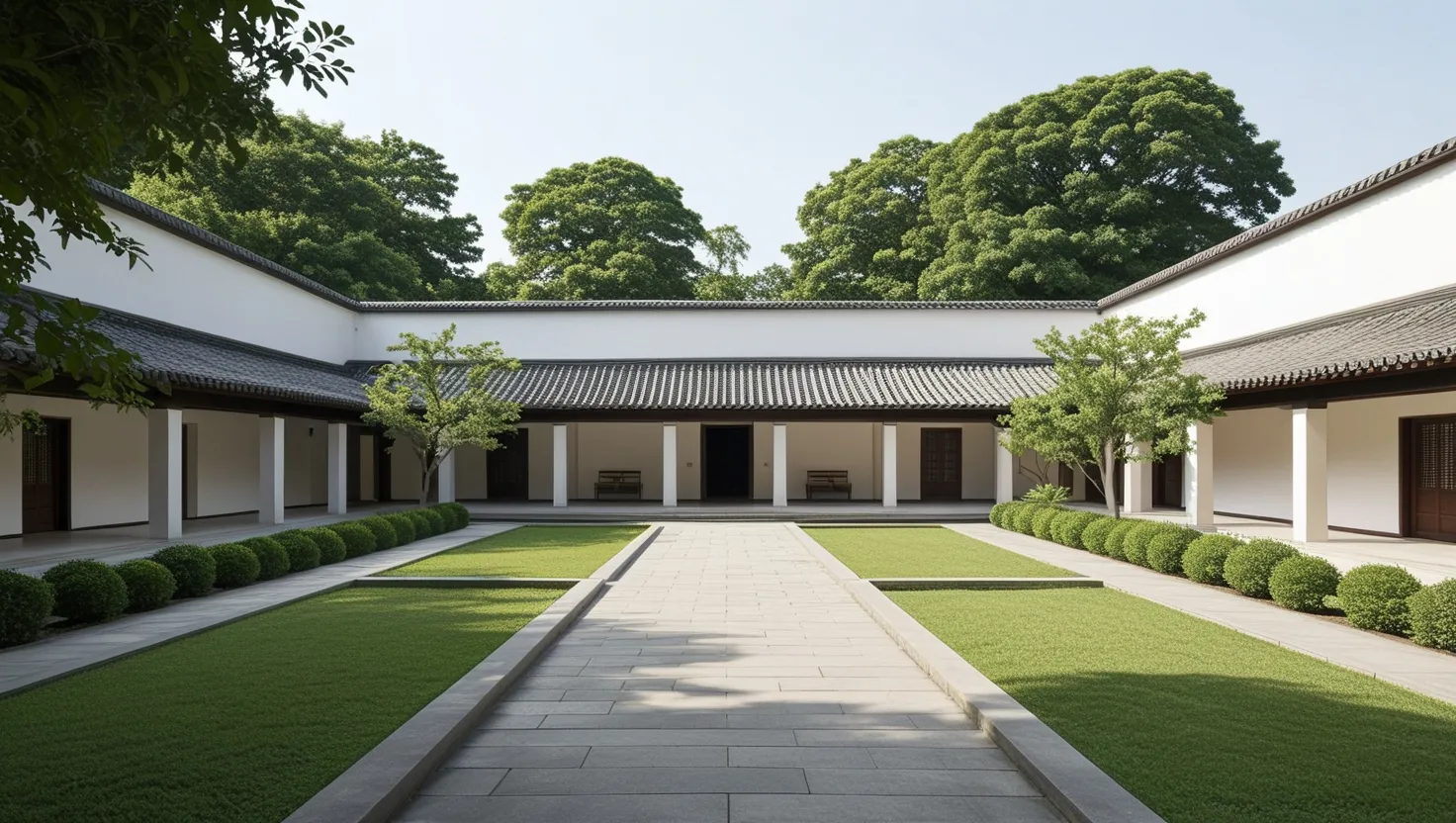I invite you to consider a home not just as shelter, but as a living participant in our story—a space shaped by cosmic intent, precise measurement, and soulful ritual. The principles of Vedic architecture, refined across millennia, offer a quietly radical perspective on what our settlements can be: cooperative, harmonious, and deeply attuned to both nature and the unseen.
“What is the use of a house if you haven’t got a tolerable planet to put it on?” Thoreau’s question resonates with the first idea in Vaastu Shastra—placement. Placement and orientation of a home are not afterthoughts—they’re foundational. Imagine waking every day to sunlight pouring from the east, the air still sweet from the night. This is no accident. According to Vedic principles, building with intention toward cardinal directions isn’t just old wisdom—it’s engineering for well-being. The east invites energy, clarity, and new beginnings, while the north brings peace and prosperity. The directions aren’t mere compass readings; they’re invitations, each with its own influence.
But if orientation sets the stage, sacred geometry is the script. The math here is exquisitely subtle. Vedic architects use ratios derived from ancient cosmology, seeing rooms not as boxes, but as energetic fields. The Vastu Purusha Mandala—essentially a cosmic map—guides the very first chalk marks of a foundation. Why anchor a building to a grid? Because in the Vedic worldview, proportional harmony affects not just the eye, but the mind and emotions. Can you recall stepping into a room where everything felt right, though nothing was overtly fancy? That’s geometry in action, silently governing our response.
“Architecture is the learned game, correct and magnificent, of forms assembled in light.” Le Corbusier spoke from modernity, yet his words fit seamlessly with Vaastu’s call for balance among earth, water, fire, air, and space. Here, architecture is more than construction—it’s a creation of equilibrium. Natural elements are not only included, they are honored. The central courtyard often found in traditional homes is not merely aesthetic; it channels light and wind, blurring boundaries between outside and in. Water is placed in the northeast for coolness and purification; the kitchen’s fire in the southeast, for health and vigor. What subtle lessons do we find in arranging our homes as microcosms of the planet?
Have you ever wondered how settlements shape a community’s spirit? In Vedic tradition, the heart of any village or town is communal. The temple, the marketplace, the well—these aren’t scattered randomly. They root the community, echoing the central axis of the Mandala. Homes radiate outward, each placement considering social function and the natural lay of the land. The result is remarkable: villages where daily encounters are woven into the plan, supporting cooperation and mutual care. What if we designed our neighborhoods today to nurture social ties rather than divide them?
Before any physical work begins, a different kind of architecture unfolds—a spiritual one. Vedic architecture insists on ritual consecration. The ground-breaking ceremony is not superstition, but a form of mindfulness, asking for permission from the earth and its guardian energies. Modern science recognizes the psychological power of ritual; here, the intent is even broader. If we see land as sacred, does it change the way we build? Does it foster greater respect for place and planet?
“The measure of a civilization is how it treats its weakest members,” said Gandhi. In Vaastu, even building materials are chosen for their relationship to health and environment. Local stone, wood, and plant-based mortars—not always the cheapest, but the most suitable—are revered for their inherent qualities. Ancient texts detail recipes for bio-cements using lime, jaggery, and even herbal extracts, creating walls that breathe and last. The structures endure; the people within them thrive. There’s an implicit challenge here: are our modern materials truly better just because they are new?
Those who look at Vedic architecture from a distance might see only picturesque temples or old villages. But the principles have a quietly persistent relevance. Passive cooling, for example, is not a trend—it’s encoded in the siting of windows and courtyards. Community planning that prioritizes human connection and local climate is not nostalgia; it is a counterbalance to the isolating drift of urban sprawl. Some contemporary designers integrate these ancient guidelines, finding that buildings become not just greener but more humane. Could a return to these roots offer new solutions to our modern crises?
There’s a story within every detail. The Brahma-Sthan, a concept unique to Vedic design, is the silent center of any building—a space intentionally left open, uncluttered, filled with light. From this point, all other spaces derive their meaning and orientation. It’s a metaphor for life, perhaps: by keeping a center of stillness, all action becomes more meaningful, more conscious. Have you created such a center in your own home?
“Space is the breath of art.” Frank Lloyd Wright understood a truth that Vedic architecture formalized centuries earlier: architecture is not merely the arrangement of objects, but a dynamic relationship between emptiness and form. In Vaastu, space is not empty; it’s alive, waiting to be activated through intelligent design. The five elements, the cardinal directions, the gridwork—these are tools for sculpting space so that it serves life, not the other way around.
What happens if we ignore these principles? Some may discount the effects, but many who have lived both with and without Vaastu design report a tangible difference. Ancient Indian builders weren’t creating obstacles or rules for their own sake; they were aligning human life with something greater. Could this be why certain temples, palaces, or simple mud homes continue to attract people centuries after they were built, even when newer structures stand close by?
Vedic architecture is often described as holistic, but that word is too vague for the specificity of its vision. Here, every measurement, every material, every ritual is chosen through a lens of interconnectedness. The environment is not a backdrop to human drama—it’s a co-creator in that drama. As someone who has studied these principles and walked through places shaped by them, I can say the difference is palpable: a sense of ease, coherence, and quiet joy runs through the best spaces.
Consider this: Are our current built environments supporting or undermining our happiness and health? What would it mean to see a home, not only as personal property, but as a node in a web of social, environmental, and cosmic relationships? Can we afford to ignore traditions that have understood these connections for thousands of years?
Vaastu Shastra and its seven principles are not relics locked away in the past. They are active, living tools. We can draw from their wisdom whether we are building anew or retrofitting the old. Even small acts—orienting a desk to the east, bringing more light into the center of the home, ritualizing the start of a project—can echo with these ancient insights.
“I call architecture frozen music,” said Goethe. Perhaps the greatest achievement of Vedic architecture is this: transforming everyday buildings into songs that harmonize with nature, society, and the inner self. Each principle offers a way to tune our surroundings so that our lives play out with greater meaning and joy.
Will you see your home differently now? Might you step outside, look at the streets and the landscape around you, and wonder what latent energies, what ancient wisdoms, are waiting for your attention? The next space you design or inhabit could be more than shelter—it could be a quiet meditation, a celebration of life in all its complexity and grace.






